Chicago, St. Paul, Minn. RR
Chicago, St. Paul, Minn. RR
Chicago, St. Paul, Minn. RR
Chicago & North Western Pass T
Chicagoland Commuter Railroads
Chicago Stations & Trains
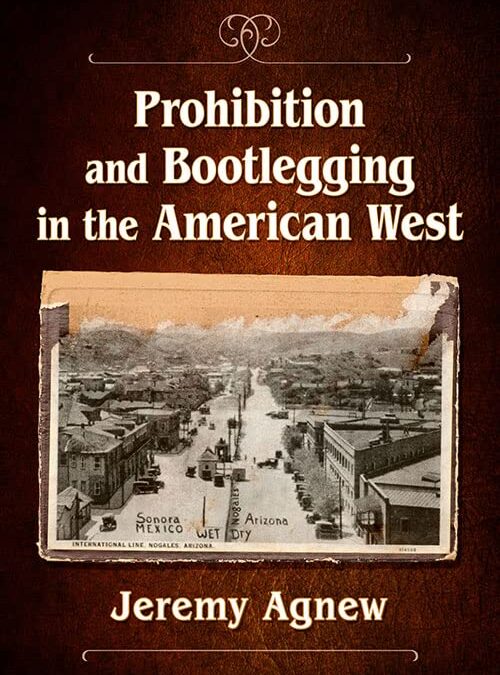
Prohibition was imposed by eager temperance movements organizers who sought to shape public behavior through alcoholic beverage control in the 19th and early 20th centuries. The success of reformers’ efforts resulted in National Prohibition in America from 1920 to 1933, but it also resulted in a thriving illegal business in the manufacture and distribution of illegal liquor. The history of Prohibition and the resulting illegal drinking is frequently told through the lens of crime and violence in Chicago and other major East Coast cities. Often neglected are the effects of Prohibition on the Western part of the United States and how Westerners rose to the challenge of avoiding the consequences of illegal drinking. Illegal liquor was imported from abroad, made in stills using strange ingredients that were sometimes poisonous to the unlucky drinker. This history includes stories ranging from serious to quirky, and provides an entertaining account of how misguided efforts resulted in numerous unintended consequences.

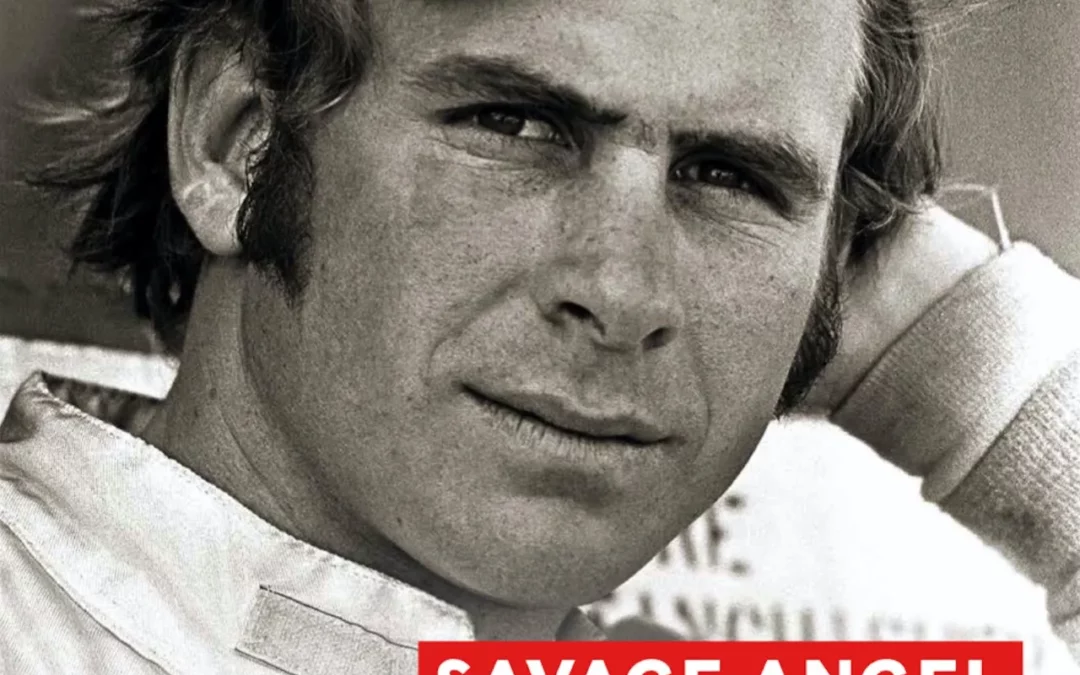
SAVAGE ANGEL author, Ted Woerner, was an 11-year old Swede Savage “super fan” sitting in the turn 4 grandstand at Indianapolis Motor Speedway on May 12, 1973. He watched and cheered as his hero broke the track record in time trials for the Indianapolis 500.
When race day finally came around more than two weeks later, he was sitting in his 6th grade classroom on a Wednesday afternoon in suburban Chicago. He listened to the rain-delayed race through a wired earplug connected to a transistor radio that he had brought to school that day. His excitement when Swede took the lead of the race turned to shock as he heard the news over the live radio broadcast that his hero had just been involved in a horrific crash only an hour into the race. He struggled to hide his emotions from his teacher. Swede Savage would die from complications from his injuries thirty-three days later.
“Soon after Swede’s death, I read that his wife was at the race, that she was pregnant, and that she witnessed his crash from the grandstand behind the pits,” recalls Ted. “I became immediately concerned about the well being of Swede’s wife and new baby, who by the time I read this book had already been born. I just couldn’t imagine how a child could enter the world under such circumstances.”
Through an improbable turn of events, Ted would finally meet Swede’s posthumous child, Angela Savage, as a grown adult over forty years later. A sacred friendship was formed between them, forged in the crucible of the same fiery tragedy. Now, several years after they first began the arduous and painful task of chronicling Swede’s life story and Angela’s complex and tumultuous life that followed, their book, SAVAGE ANGEL, is complete.
The book is a long overdue biography of Swede Savage. We finally get to know the man behind the windscreen as he pursued his childhood dream to win the Indianapolis 500. But the story doesn’t end with his death. It goes on to describe what it was like to be in the immediate family of a man whose lifetime passion was the world’s most dangerous profession. We feel their raw emotions as his final days unfolded in an Indianapolis hospital’s intensive care unit and learn how they attempted to go on with their lives after suffering such an immense and unexpected loss.
Through recent medical studies, it is now known that the baby girl born to Swede’s widow, Angela Savage, likely suffered transgenerational PTSD in her mother’s womb. Sheryl Savage not only witnessed her husband’s horrific crash from the grandstand, but also endured unimaginable stress as Swede struggled for life for another month thereafter. The book goes on to explain how the complex mental health issues, addictions, alcoholism, and general instability in Angela’s life, now appear to have been genetically hard-wired into her as a result of a statistically nearly impossible confluence of rare disorders and life experiences rarely found in a single person.
After being understandably vacant from the sport of auto racing her entire life, Angela Savage decided to accept an invitation from a small group of her father’s fans to come to the Indianapolis 500 for the first time in her life, forty-one years after the death of her father there. With additional support provided by the Indianapolis Motor Speedway, the trip was a life-changing experience. At Indy, she was showered with unconditional love. The embrace she felt from “the racing family,” and her unimaginably brave confrontation of the place where her father’s life ended, would change her life forever.
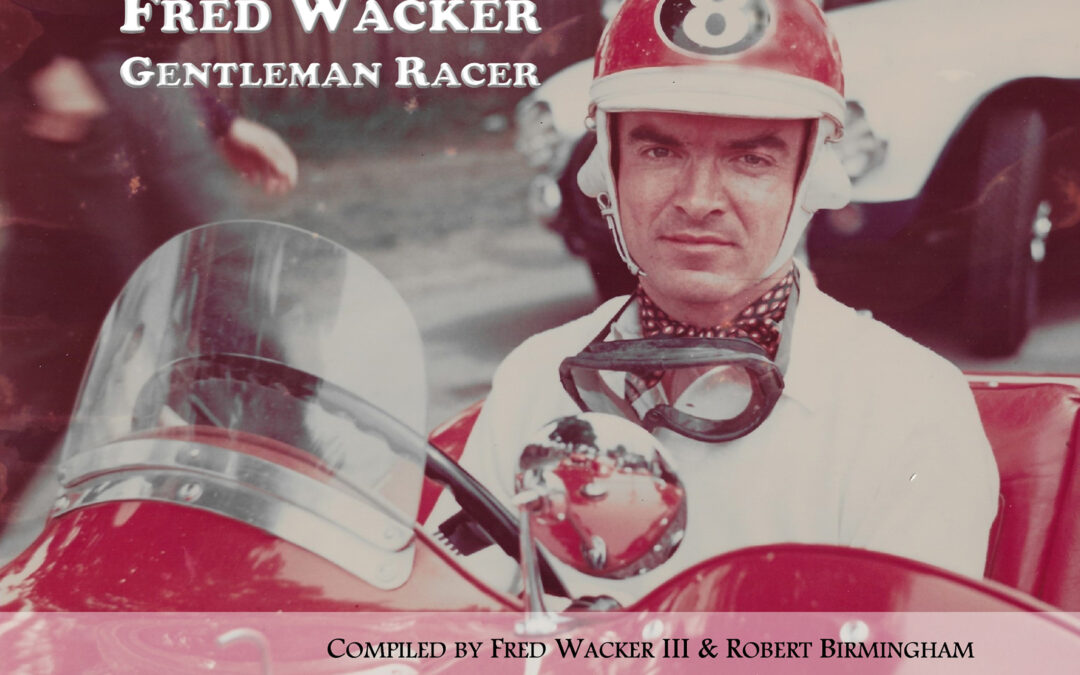
Fred Wacker, Gentleman Racer covers a special time in racing history. Fred played several important roles in the early years of sports car racing competition in post-WWII America. Fred competed in a range of events as a driver. He started out in an MG, moved up to a Cadillac-powered Allard, and drove internationally for both Briggs Cunningham and the French racing team in the Grand Prix format. Additionally, he helped to found the Chicago region of the Sports Car Club of America, serving as National President of the SCCA in 1952 and 1953.
Whether driving for his own team or others, or helping to organize the sport, Fred played an important role in this golden era of racing. This is his story.
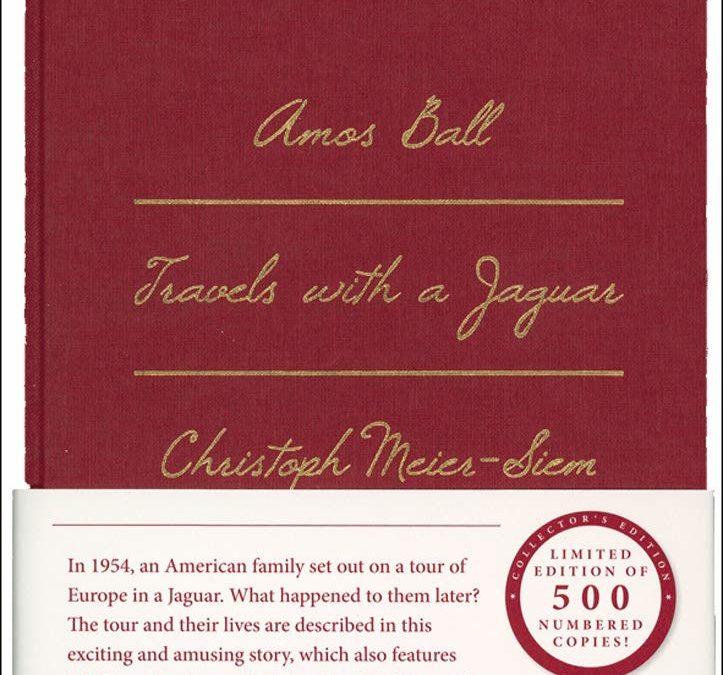
In 1954, an American family set out on a tour of Europe in a Jaguar. What happened to them? The tour and their lives are described in this exciting and amusing story.
• Also features appearances by J.F.K., George Ball, Lyndon B. Johnson, the Chicago Seven, and Tom Hanks
• This beautifully designed collectors’ edition was produced using the methods of the 1950s
• Limited to 500 copies, each one signed
An American family of five toured Europe for six weeks in their Jaguar. It wouldn’t be a big deal, had it not happened in 1954 when Europe was just in a phase of self-discovery, less than ten years after the end of World War II. Amos Ball and his family were not discouraged by the turmoil and took a tour through England, France, Italy and Switzerland. Their vehicle: a grand Jaguar Mark II, at that time the fastest four-door limousine in Europe. Amos Ball captured all their experiences in his Travels with a Jaguar, which also served to illustrate a fascinating portrait of post-war Europe. In addition, Ball wrote the first ever book in which the Jaguar was the theme.
Jaguar-lover and publisher Christoph Meier-Siem rediscovered this travel journey, which today is a rare, sought-after piece of literature: – the complete travel story from 1954, newly translated, and including an added booklet ‘What to Drive?’. This collectors’ edition, limited to 500 copies, has been numbered by hand.
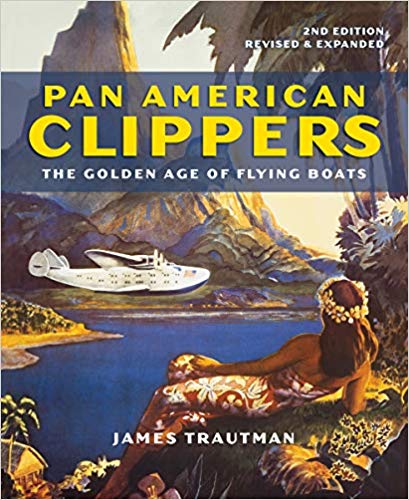
The photographs and artwork will enable readers to grasp the magnificence of the transoceanic flying boats…The accurate, authoritative text will provide information that is new to all but the exceptionally well-informed aviation buff and nonspecialist historian.”
–Choice
For a world recovering from the Great Depression, the Pan American Airways Clipper symbolized luxury, adventure and a brighter future. Illustrated with rare period photographs, vintage travel posters, magazine ads and colorful company brochures, Pan American Clippers covers all aspects of the Golden Age of Pan American’s graceful “flying boats.”
This edition has an additional 16 pages to add more historical and current information and provide additional detail and context to the historical importance of the flying boats, including:
Visionary Pan Am founder Juan Trippe knew the importance of international travel to the 20th century, and his pioneering airline played a central role in the advancement of transoceanic flight, setting overseas time and distance records, providing airmail delivery and eventually as troop and cargo transports for the Allies during World War II. By dramatically reducing travel time and opening up international air travel to the general public, Pan Am Clippers forever changed the world.
This captivating, informative and richly illustrated book takes readers back to a time of glamor, romance and progress, when dreams once thought impossible were suddenly a reality.
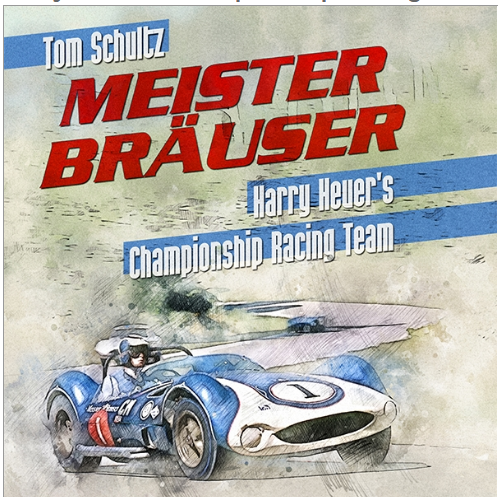
In early 1959, young Harry Heuer, Executive Vice President of the Peter Hand Brewery, Chicago, Illinois, caught the racing bug. He immediately bought a race car and entered it in the May 1959 Meadowdale USAC professional race. At the same time, Reventlow Automobiles Inc., builder and racer of the Scarab, put both of its 1958 race-winning Scarabs up for sale. Heuer bought one, hired Augie Pabst to drive it, and an unprecedented run of wins and championships resulted.
An unforeseen chain of events later in 1959 resulted in the newly-formed Meister Bräuser Racing Team purchasing the second of the two Scarabs, which meant that Heuer had what were arguably the two best sports racing cars in the country united in one team. The results were immediate. A championship in 1959, and a streak of race wins throughout 1960 that earned a second championship. Over the next three seasons three more championships were garnered.
Besides its on-track successes, Meister Bräuser was a leader in promoting team identity. It was one of the first to utilize an enclosed tractor trailer rig to, not only transport the cars, but also to be a rolling at-track machine shop. They owned a small pit tractor to tow the cars around the paddock and had support passenger vehicles available for the crew. All the vehicles were painted in the team colors of dark metallic blue trimmed with white and accented by red pin stripes. The team members were outfitted in matching uniforms and were often flown to the races rather than left to drive cross-country.
The Team ran for only five years, but in that time set a mark for professionalism, wins and championships. They raced hard and played hard. This book recounts the history of the team with their triumphs and their failures. We think that you will find it enjoyable reading, and a valuable look into American racing in the early 1960s
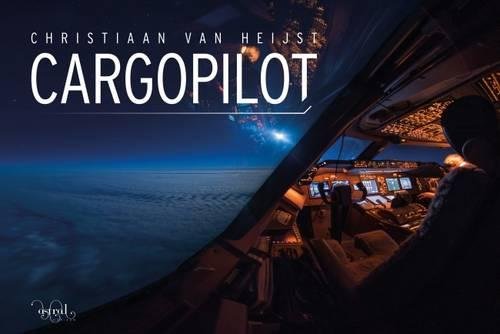
Christiaan Van Heijst is a 747 pilot and one of the world s leading aviation photographers. Cargopilot is a heavyweight luxury coffee table volume bringing together over 200 of his photos from the cockpit and from the ramp on six continents, from technically fascinating views of the operation of the Boeing 747 to evocative earthscapes and the rare sight of other aircraft in flight. Christiaan was also witness to a unique phenomenon, which lit up the floor of the Pacific Ocean at night as his cargo jet flew overhead. Geologists, nautical authorities, the military (officially) and the airlines are at a loss to explain the sight, but Christiaan’s photos of that night that were published around the world are reproduced in this book, along with Christiaan’s detailed account of the flight. Christiaan’s flying and his camera take in everything from the global megahubs of Chicago, Beijing and Luxembourg to exotic ports such as Kinshasa, Kabul and Lagos. This book is a must-have for fans of aviation, geography, and photography.
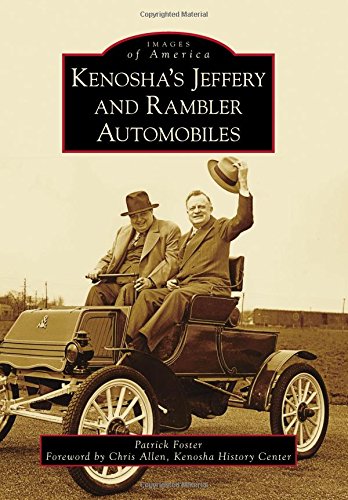
The Thomas B. Jeffery Company existed as an automobile maker from 1902 to 1916 and in that short span created a corporate foundation that would lead to successor firms Nash Motors, Nash-Kelvinator, American Motors, and Jeep. Thomas Jeffery named his automobile the Rambler, after the popular bicycles he manufactured prior to his car venture. The Rambler was a car of outstanding quality and reliability. From its first showing in Chicago in 1902, the Rambler stood out as an unusual value for the money. That reputation carried over when Tom Jeffery’s son and successor Charles decided to change the car’s name to Jeffery in honor of his late father. In 1916, Charles Nash, then president of General Motors, resigned his position and purchased the Thomas B. Jeffery firm, renaming it the Nash Motors Company. Before long, an all-new Nash car was introduced, and the Jeffery brand faded away. Nash went on to become one of the largest of the American independent automakers.

After three years of research, countless interviews, and looking through thousands of photos it’s finally here: Hurley Haywood’s life story.
From his upbringing in Chicago and Wheaton, Illinois, to his chance meeting with Peter Gregg, Hurley Haywood was destined to drive anything he could get his hands on. Life-long relationships with Porsche and the Brumos dealership provided the kinds of opportunities of which most racing drivers only dream.
With three overall victories at Le Mans, five at the Rolex 24 at Daytona, and two at the 12 Hours of Sebring, Haywood is the world’s most successful endurance sports-car racer. In addition, Haywood won several championships and dozens of other races during a career spanning more than 43 years.
Now, in this book of 420 pages with over 650 photos, Haywood tells it all. From the beginning.
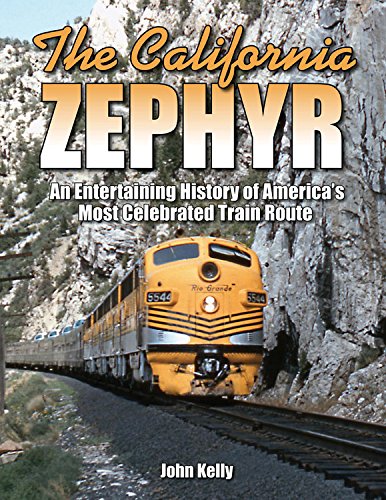
America’s most talked-about train, the California Zephyr was inaugurated March 20, 1949, book-ended by the world-class skylines of Chicago and San Francisco. Operated in partnership over three railroads; Chicago, Burlington & Quincy, Denver & Rio Grande, and Western Pacific, the train was designed in Art Deco style and built of Shotwelded stainless-steel by the Budd Company. The California Zephyr incorporated the best of the Zephyr fleet including Vista-Dome coaches and Vista-Dome observation cars. Powered by General Motors diesel locomotives the western themed “land-cruise” train traveled 2,532 miles on its journey from Chicago traversing the spectacular Colorado Rockies via the 6.2-mile Moffat Tunnel and California’s magnificent Feather River Canyon – by daylight in both directions. Vintage equipment diagrams include California Zephyr baggage car, Vista-Dome coach, Vista-Dome buffet-dormitory car, dining car, bedroom-cabin car and Vista-Dome bedroom-buffet-lounge-observation car. Other highlights feature original trip reports by “Zephyrette” hostesses, travel brochures, timetables, dining car menus and full-color photo gallery of the stunning California Zephyr.
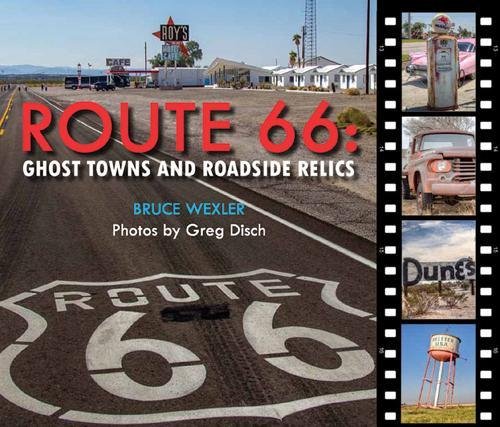
SOLD OUT
Originally paved in the 1920s, Route 66 has been a staple of the American Road Trip through the Great Depression and was a major method of the bootlegging operation. Spanning a total of 8 states and stretching from Chicago all the way to the Pacific Ocean, Route 66 was appropriately named the Motheroad. An icon of American Folklore, between the pages there are a slew of old gas stations, restaurants, diners, rest stops, and other attractions. Each must-see vestige is peppered with the history of the area.
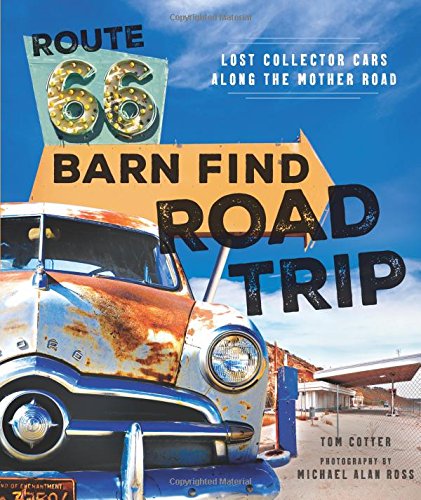
Abandoned cars on America’s most iconic abandoned road. Sounds like a great idea for a road trip.
For a nation that loves the idea of the road, there is no more legendary ribbon of highway than the 2,451 miles comprising historic Route 66. Along the Mother Road lies the detritus of the automotive age: motels, roadside attractions, diners, service stations, drive-ins, and dives. Hidden in, around, and behind its buildings or abandoned along its roadside hide collector cars, lost trucks, and moldering motorcycles. How could there be a better destination for automotive archaeologist Tom Cotter?
In Route 66 Barn Find Road Trip Cotter and his BBF (best barn finder) pal Brian Barr jump on Route 66, just outside Chicago, seeking rusted gold in every state Route 66 passes through. Along the way, ace lensman Michael Alan Ross documents their finds, mishaps, and various adventures. Starting in the Midwest and barreling through Oklahoma, Texas, and New Mexico, the barn-find bunch continues on to Arizona before completing their quest in Santa Monica, California. You’ll never guess what automotive treasure they see peeking out from corroded garages and behind weary buildings along the way. You can bet every awesome barn find was investigated and recorded in Route 66 Barn Find Road Trip.
Whether you’ve only dreamed of retracing US 66 or are familiar with its path but never considered car hunting there, Route 66 Barn Find Road Trip will take you on the trip of a lifetime. Hop in; you can ride shotgun.
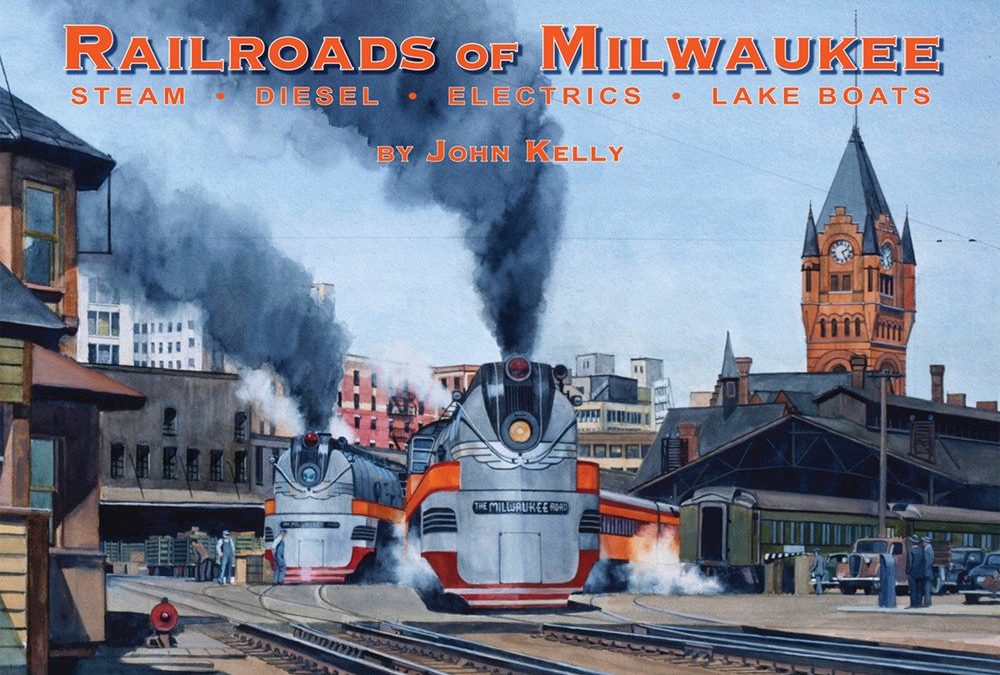
In this new 264-page book, 68 pages of which are in full color, author John Kelly explores the fascinating history of the city’s railroads, starting with the Milwaukee & Waukesha in 1847. By 1873 the Milwaukee & St. Paul Railway–later the Chicago, Milwaukee, St. Paul & Pacific (“The Milwaukee Road”) opened a line to Chicago and the railroad was on its way.
The Milwaukee Shops and the Hiawatha legend, Skytops and Super Domes, and the story behind designer Brooks Stevens, are also featured. Kelly supplies copious data on not only the Milwaukee Road, but also the Chicago & NorthWestern’s freight and passenger service, including the 400 fleet. Kelly also writes about the Chicago North Shore and Milwaukee Railroad, America’s Fastest Interurban, the Skokie Valley Route and Electroliners. In the Milwaukee Electric Railway & Light Company section, he reviews streetcars, interurbans and trackless trolley buses.
With the inclusion of the Lake Boats, the Pere Marquette, Chesapeake & Ohio, and Grand Trunk Western RR’s also come into the picture. In addition the book covers the Beer Line and the breweries, Milwaukee’s meatpacking industry, Milwaukee’s railroad stations and freight yards–a recipe for some great railroad reading.
Generously illustrated with 135 color and 362 black and white photos, maps and drawings, this limited edition hardcover volume will be a treasured keepsake for your library.

“Since its beginning in Chicago in the 1940s, Monogram’s plastic model kits for cars, ships, aircraft, and spacecraft have captured the imaginations of hobbyists everywhere. The thousands of models Monogram made from 1945 to 1986 are described in detail, shown in over 300 beautiful color photos, and given their collector’s value. The popular cars range from classic hot rods and flashy custom cars to NASCAR racers.
Interviews were conducted for this book with company executives, designers and model sculptors including Darryl Starbird and Tom Daniel, artists who painted the box art, and salesmen who put the kits on store shelves. Today the kits and finished models are themselves collectibles for beginning and advanced modelers alike.”

“””I am no helmeted, begoggled hero of the skies; picture me bookish, bespectacled, unable to hold even a teacup without rattling it. As a pilot, I am merely an amateur, and I know it. . . . I shouldn’t be talking. But I can’t help talking. For you take the air: the thin, substanceless air that can be made to bear a man; you take America; and you take an airplane, which of all the works of man is the nearest to a living being—you take those things and mix them up, and they will act as a drug which will knock all proper reticence right out of you. And so, here I go talking . . .””—from America from the Air In 1927, Charles Lindbergh made his historic solo flight across the Atlantic; Amelia Earhart became the first woman to do so in 1932. And so was born the golden age of flying. Aviators became the era’s new heroes and the airplane its icon. In early 1930s Chicago, a German-born graduate student became fascinated by the airplane and its usefulness as a great geographic and sociological tool. Wolfgang Langewiesche sold his car and used his meager salary to pay for flying lessons at 25 cents a minute. With the same passion America had taken to the road a decade earlier, Langewiesche took to the air. He eagerly inhaled the landscape and breathed observations about the country, writing a series of books that describe the heady excitement and freedom of flight and the stunning views of his adopted country from an entirely new vantage point—the sky. This new edited volume revives the writings from two of his now out-of-print books. America from the Air draws from Langewiesche’s classic account of his early experiences as a pilot, I’ll Take the High Road (first published in 1939 and praised by the New York Times as “”a stirring and revealing story, told with sensitiveness and lucidity and with the warmth of a modest personal charm””), and selections from his 1951 memoir, A Flier’s World, to create a distinctive book that provides a pioneering look at the American landscape as seen from the cockpit of a light plane. Langewiesche’s photographs from his cross-country flights circa 1939 evoke the era. Wolfgang Langewiesche is revered among pilots for his 1944 flying primer, Stick and Rudder, currently in its seventieth printing. Considered the bible of aviation, it tells us the “”how”” of flying; America from the Air tells us the “”why.”” Here his descriptions of the country offer unique perspectives on New England, the Midwest, and the Atlantic Coast from Virginia to Key West, at a time before the country was paved over by multilane expressways, suburban tract housing, and strip malls. His bird’s-eye view of America takes in small farms, deserted seashores, busy railway lines, and cities in which skyscrapers were still engineering marvels. With the keen eye of a surveyor and an uncommon talent for conveying the physical sensation of flying, he describes landscape in all its beauty and detail as it rolls out beneath him, unveiling its mysteries. Langewiesche is revealed here as an infectiously enthusiastic aviator and an unrivaled observer of the American landscape. In a new foreword, Langewiesche’s son, writer William Langewiesche, describes his father’s love of the view from above. Hokanson and Kratz’s introduction and biography update the reader, incorporating stories gleaned from recent interviews with the author.
”